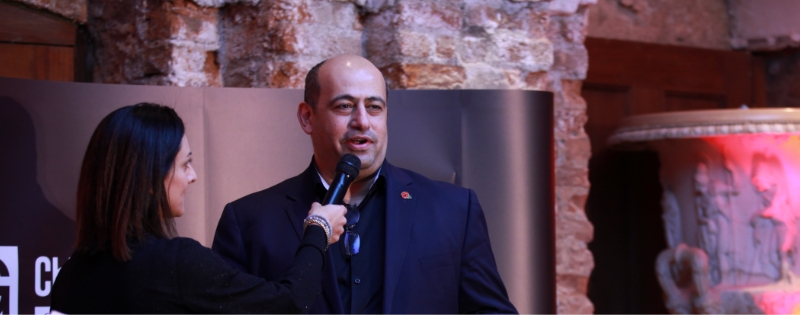2020 and the Race for Remote
I hate to kick this series off with an obvious statement, but here it goes: COVID-19 was the greatest disruptor of our lifetime, let alone the greatest catalyst for transformation that anyone has seen since the industrial revolution. 2020 was, at the very least, tumultuous. For those in HR, however, it was a nightmarish race against the clock. It also marked the beginning of an unlikely relationship with IT, but more on that later.
While the entire world shut down and people were forced to stay home, businesses and organizations were forced into survival mode. This meant, amongst other things, the transition to remote working which, through a layman’s eyes, seemed like a totally viable option and easy transition. Alas, this wasn’t the case. The pandemic’s impact was so much deeper and complicated for the newly appointed remote workforce, let alone the countless HR departments tasked with making sure said workforce was fully prepared and equipped.
Enter the layman once more. Laptops? Everybody has one. Internet? Of course – it’s 2020! Work hours? Easy to monitor. If anything, the only concern is what to do with all that empty office space, right? Plus, this is all temporary – pandemics don’t really happen in this golden age of technological and scientific advances.
As anyone in Human Resources (HR) will tell you, this couldn’t be farther from the truth. To them, what they thought to be the “new normal” in 2020 entailed a logistical nightmare. No, not everyone has a laptop or home computer and for the ones that do, their laptop hasn’t been safeguarded against cybersecurity attacks. Furthermore, there was no way to ensure that those with home internet were on a secure connection. This, of course, brought about the previously unseen partnership between HR and IT to make sure the remote workforce was both equipped and safe.
But it didn’t stop there. Mental and physical wellbeing quickly became top of mind for HR leaders as their staff tried to juggle work with the entire family being home, all while coping with a frightening pandemic. To make matters worse, many employees didn’t know how to properly collaborate with their teams or when to unplug. All of this as they watched coworkers and millions of other people get fired or furloughed. The sudden shift to remote sprung a plethora of new problems and scenarios, most of which hadn’t been dealt with before and, under normal circumstances, would require years of testing and experimentation to solve. HR leaders weren’t afforded that kind of time and had to solve these problems posthaste.
At the time, this was thought to be the “new normal.” Tumult and turmoil ruled the news, and the pandemic showed no signs of slowing. Within that calendar year, however, HR leaders would brainstorm, collaborate, and ultimately implement plans and initiatives that would not just mitigate or solve these problems – they ended up writing the HR pandemic playbook for future generations to learn from, and did so under the false pretense that this was the “new normal.”
The Actual “New Normal” for HR
Obviously, it wasn’t. Lockdown restrictions started to lift, schools began to open, and some staff returned to work. Now in 2022, we’re in this sort of hybrid state. But one thing has become certain in HR: employee well-being is no longer just a benefit; it’s a major part of the job. For organizations to thrive, so must their employees. Otherwise, in this “new normal,” the consequences could spell trouble for so much more than an organization’s bottom line (I’m looking at you, Great Resignation).
For your HR department to flourish in 2022 and beyond requires a “new normal” mindset. Best in class organizations are the ones who have stepped up beyond employee wellness to include the employee’s entire family. Hewlett Packard’s HP Spirit Program is a prime example, as it provides health and well-being apps, resources for parent who are home schooling, and multiple other ways to support remote workers and remote working parents. And plenty of others are following suit, with loads of new apps springing up to support them. It’s just up to the rest to accept and embrace what successful HR departments already know: For HR, the “new normal” is all about well-being.
How Long Will This “New Normal” Last?
Let’s answer that question with some stats. A recent Forbes survey amongst 600 full-time workers found 62% of employees requiring well-being benefits as a major factor in whether to apply for a job. The same survey showed 67% of Gen Z workers strongly agreeing, thus showing that this trend extends to the younger generation of full-timers; the ones who will be running the show for years to come. What’s more, the Global Wellness Institute believes workplace mental health benefits will grow nearly 10% annually over the next 5 years.
In HR, employee well-being looks to be a permanent fixture. And that is their “new normal.”
GDS Summits are tailored 3-day virtual event conferences that bring together business leaders and solution providers to accelerate sales cycles, industry conversations and outcomes. Regarding the HR Digital Summit 88% of Delegates said the overall experience of the Digital Summit they attended was either Above Average or Excellent and 100% of Delegates said the Digital Summit provided them with actionable outcomes to support their current initiatives.
For more, click here to hear from attendees on how GDS has helped them to achieve their business outcomes.
Continue the debate at GDS’ HR Summits where we bring together senior human resources executives who are actively seeking to share, learn, engage, and find the best solutions.












